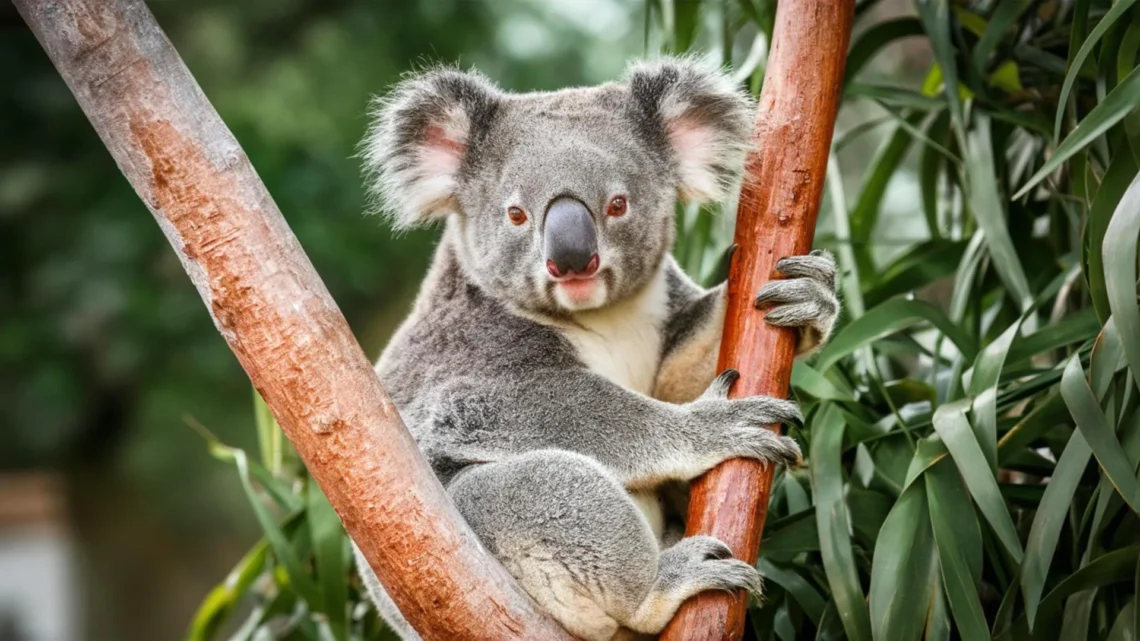Australian researchers have uncovered a significant link between stress and the heightened risk of disease in koalas located in South East Queensland and the New South Wales North Coast.
A study led by Dr. Michaela Blyton from The University of Queensland examined and tracked the levels of koala retrovirus (KoRV) in both captive and wild koala populations.
“Our goal was to monitor how their KoRV levels changed over time and how this related to chlamydial infections as well as stress hormone levels, specifically cortisol and corticosterone, found in their feces,” Dr. Blyton explained.
“A heightened virus load may compromise the immune system, meaning koalas with higher KoRV levels face greater risks of diseases like Chlamydia, which can lead to blindness, infertility, and even death.”
“Deteriorating or disappearing habitats can elevate stress levels, and we found that koalas with elevated average cortisol levels also had higher average KoRV loads.”
“Our findings confirm that the main threats to koalas—habitat loss and disease—are interconnected. Understanding this is crucial for enhancing support for the dwindling koala populations.”
The study involved 67 koalas, including those being treated for Chlamydia before their release, animals participating in a Chlamydia vaccine trial, and a few individuals in captivity due to injury or health issues.
“Our research showed that KoRV levels in individual koalas remained stable over time,” Dr. Blyton noted.
“Even when a koala recovered from Chlamydia, their KoRV load did not decrease, indicating that a high KoRV load increases susceptibility to chlamydial infections, rather than the other way around.”
“This suggests that high KoRV levels may be fueling the Chlamydia epidemic affecting koalas in northern New South Wales and South East Queensland.”
The study, conducted by UQ’s School of Chemistry and Molecular Biosciences, received support from the Port Macquarie Koala Hospital, Currumbin Wildlife Hospital, and funding from the NSW Government through the NSW Koala Strategy.
“To effectively conserve koalas, we must adopt a holistic approach, recognizing the links between disease and environmental factors,” Dr. Blyton emphasized.
“Preserving high-quality habitats is essential for supporting koala populations.”
“We are actively participating in Koala Conservation Australia’s breed-to-release program, where we screen and prioritize animals with lower KoRV levels to enhance their offspring’s immunity against Chlamydia and other infectious diseases.”
“We are also exploring antiretrovirals to lower KoRV levels in koalas, giving them a better chance of combating Chlamydia and preventing transmission to future generations.”
The research article has been published in the Journal of General Virology, a publication by the Microbiology Society, a charitable organization for scientists focused on microbes and their impacts.
Summary: A study led by Dr. Michaela Blyton from The University of Queensland has identified a connection between stress and disease risk in koalas. Researchers found that higher levels of the koala retrovirus (KoRV) correlate with increased susceptibility to Chlamydia, particularly in areas of habitat loss. The findings call for a holistic approach to conservation, emphasizing habitat preservation, while also exploring potential treatments to reduce KoRV levels in koalas.





